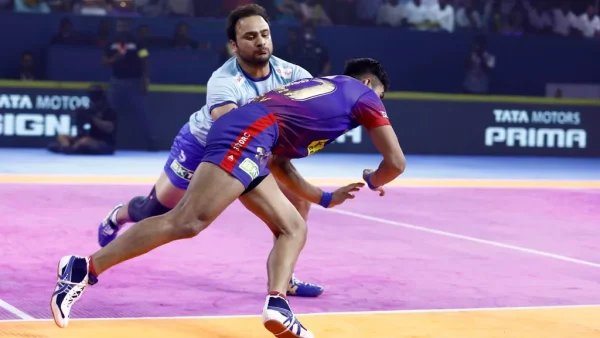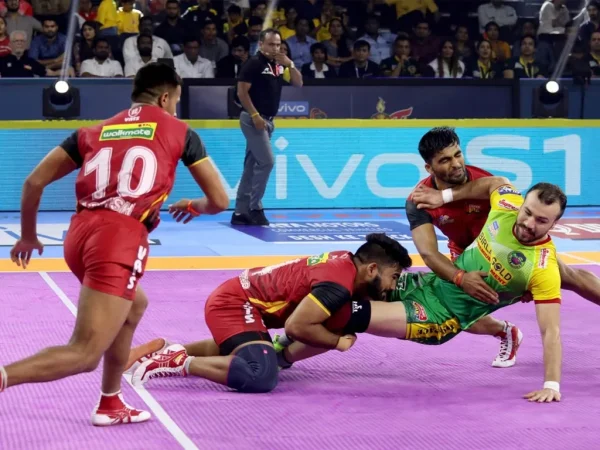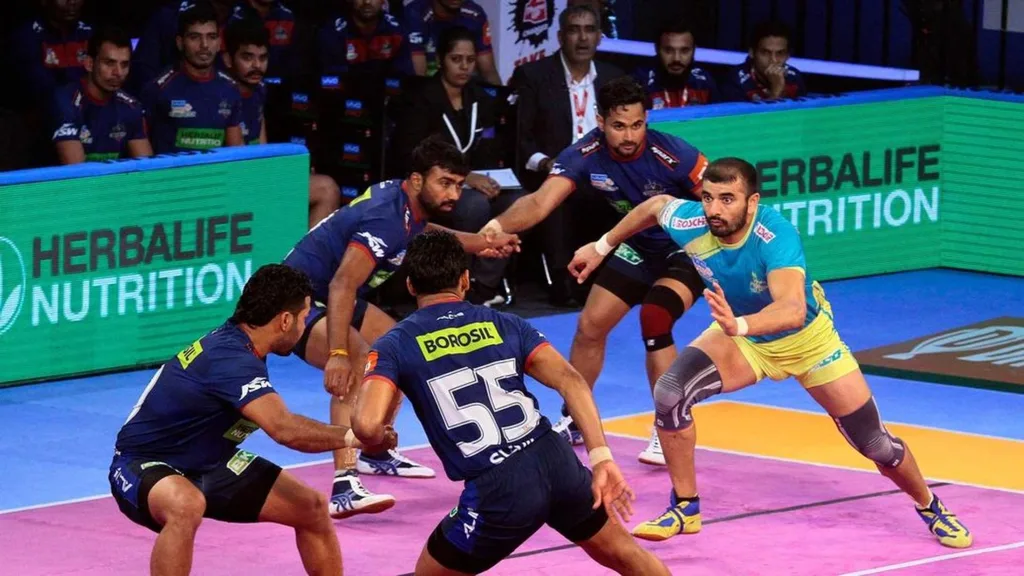1. Basic Rules of Kabaddi
- Kabaddi is played between two teams, each consisting of seven active players and five substitutes.
- The objective is for a “raider” to enter the opponent’s half, tag as many defenders as possible, and return safely while chanting “kabaddi” continuously.
- The defending team must prevent the raider from returning by tackling or holding them down until they run out of breath.

2. Match Format
- A standard match consists of two halves of 20 minutes each, with a 5-minute break in between.
- Each team alternates between attacking (raiding) and defending.
- A successful raid earns points, while a failed raid can result in the loss of points.
- If a player is out, they can only be revived if their team scores points.
3. Scoring System
- Successful Raid: 1 point per defender tagged.
- Super Raid: 2 or more defenders tagged in a single raid earns additional points.
- Super Tackle: If a team with 3 or fewer defenders successfully tackles a raider, they earn 2 points instead of 1.
- All-Out: If all players on a team are eliminated, the opposing team earns 2 bonus points.
- Bonus Points: A raider who crosses the bonus line before touching any defender can earn an additional point.
4. Player Roles
- Raider: The attacking player who enters the opponent’s side to score points.
- Defender: Players who stop the raider from returning to their half.
- All-Rounder: A versatile player who excels in both raiding and defending.

5. Fouls and Violations
- Struggle Without a Raid: A raider must attempt a touch before returning.
- Stalling: A raider must not exceed 30 seconds per raid.
- Boundary Violation: Stepping out of bounds results in elimination.
- Illegal Holds: Neck and face holds are strictly prohibited.
- Technical Fouls: Teams must not have more than 7 players on the field at any time.
6. 2025 Rule Updates
- Raiding Time Reduced: The raider now has 25 seconds instead of 30 to complete a raid.
- Super Raid Bonus: If a raider eliminates 3 or more defenders, the team gets an extra bonus point.
- Defensive Substitutions: Teams can now make rolling substitutions without stopping the game.
- Referee Review System: Teams can challenge a referee’s decision using the video referral system twice per match.
7. International Match Standards
- Governed by the International Kabaddi Federation (IKF) and Asian Kabaddi Federation (AKF).
- Official court size: 13m x 10m for men and 12m x 8m for women.
- Professional leagues like Pro Kabaddi League (PKL) follow similar rules but with minor modifications.
- Matches use advanced technology like video replays and electronic scoring systems to ensure fair play.





